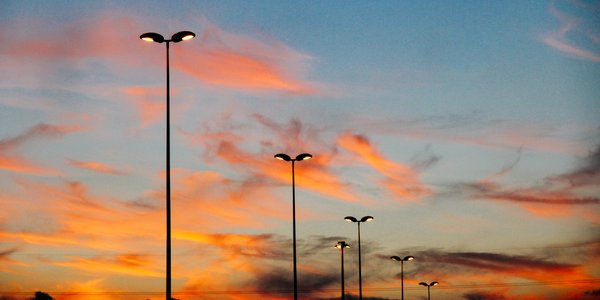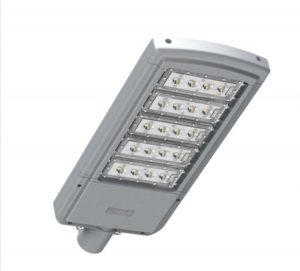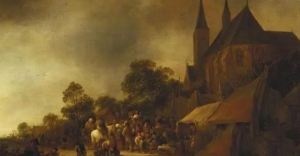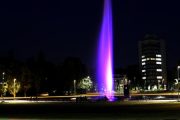What is the importance of street lights
Street lamps refer to lamps that provide lighting functions to roads, and generally refer to lamps within the range of road lighting in traffic lighting. Street lights are widely used in various places where lighting is required. Fire is the history of human development and a history of entrepreneurship in pursuit of light. The use of fire is an important milestone in the progress of human civilization. The bonfires ignited by ancient people were the earliest lights.
Road lights are mainly used on roads to provide passersby and vehicles traveling at night with the necessary lighting equipment. It must require road lights to cooperate with the light to meet reasonable use, but the light source needs to be illuminated and must have a long The life span can be used for a long time to meet people’s use. Use light energy reasonably to avoid glare. The light emitted by it should be reflected at the requested angle, and it will fall on the pavement to have a specified figure. The light spreads evenly, the pavement is bright, and the glare is small. To reduce glare, light distribution control can be performed above the maximum light intensity.
According to the road section, width, vehicle and pedestrian conditions, road lights can be arranged symmetrically on both sides of the road, intertwined on both sides, on one side, and on the center of the road. Generally speaking, roads over 20 meters in width and welcoming roads can be considered symmetrically arranged on both sides; roads over 15 meters in width can be intertwined with each other: narrower roads can be arranged on one side. The current requirements for energy conservation, low carbon and environmental protection are the main directions for future development. Road lights can also change people’s moods, improve people’s emotions, and can change people’s perceptions, creating a palette-like night.
During the day, courtyard lights can decorate the city landscape; at night, courtyard lamps can provide the necessary lighting and convenience of life, increase the sense of security of residents, but also highlight the highlights of the city, and interpret the bright style, so that it is still used today and has developed into a mature industrial chain . Classification of European style garden lights: Most of their design styles use European-style European art elements and abstract expression forms. Such as: Crown courtyard lights. Modern courtyard lamp: its design style mostly adopts modern art Elements, expressed in a simple manner, such as: spring bud garden lights. Classical courtyard lights: Most of their designs use Chinese classical elements, and apply and modify them, such as palace lights. Street lights have strong light effects and good color rendering performance to meet normal use in ultra-low temperature environments. Different street lights have different styles to meet the design style of urban buildings and meet people’s use.
Distance between street light poles
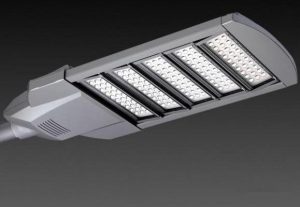
The distance between street lights is determined according to the nature of the road, such as factory roads, rural roads, urban roads, and the power of street lights such as 30W, 60W, 120W, 150W. The width of the road surface and the height of the street light poles determine the distance between street lights. In general, the distance between street lights on urban roads is between 25 meters and 50 meters. If it is a small street lamp such as a landscape lamp, a garden lamp, etc., when the light source is not very bright, the spacing can be shortened a little, and the interval can be about 20 meters. The specific situation should be determined according to customer needs or design requirements size. Some are required to achieve the illuminance value. There is no rigid requirement. Generally speaking, the street lamp interval is related to the height of the lamp pole and the wattage of the lamp cap. 60 watt LED lamp heads, about 6 meters of poles, 15-18 meters apart; 8 meters of poles are 20-24 meters apart, 12 meters of poles 32-36 meters apart.
What factors determine the height of the street light
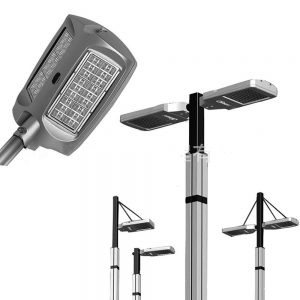
In order to avoid glare, the installation height of street lights (d) (e) f) and street lights should not be less than 4.5m. The distance between the street light poles can be 25 ~ -30m, and the distance between the light poles entering the curve should be appropriately reduced. When the road width is A, the height of the courtyard lights can be selected from 0.6A (single-sided cloth lights) to 1.2A (double-sided symmetrical cloth lights), but it should not be higher than 3.5m. The pitch of the courtyard lights can be 15-20m.
The street lamp should extend from the cliff to 0.6 ~ -1m, the elevation angle on the horizontal line of the street lamp should be 5 degrees, and the brightness of the road should not be lower than 1cd / m2. Outdoor lighting should be provided with a separate short circuit protection at each light pole. The ratio of minimum illumination to maximum illumination should be between 1: 10- ~ -1: .15. Outdoor lighting should be controlled remotely in the duty room or transformer room, and some lights can be turned off at night. When outdoor lighting adopts three-phase power distribution, three-phase load balance should be maintained in different lighting control methods. The location of outdoor parking plaza light poles must not affect traffic. Parking plaza lighting can use light sources with high color rendering and long life.
High pole lighting should use axisymmetric light distribution lamps, and the installation height H of the lamps can be determined by the following formula:
He0.5R: R is the radius of the illuminated range, the unit is m. For high pole lighting, a liftable lamp panel should be used. a. The planar layout of street lamps The planar layout of street lamps is limited by many objective conditions. Many factors must be considered, and these factors affect each other and restrict each other. Such as road grade, traffic flow, speed, road width, pavement structure, power of lamps, installation height and intersection, etc., the layout is different.
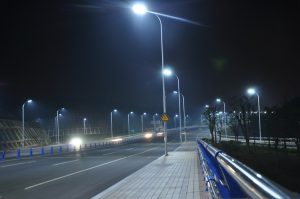 1.General street lighting (arrangement of street lamps). When the width of the road does not exceed 15m, a single-sided lighting method is usually adopted.
1.General street lighting (arrangement of street lamps). When the width of the road does not exceed 15m, a single-sided lighting method is usually adopted.
(a) Unilateral lighting
(b) Centerline lighting
(c) Cross lighting on both sides
(d) Symmetrical lighting on both sides 1-Light pole 2-Street light 3-Steel cable 4 Spacers When there are shops on both sides of the road or When the window illumination is relatively high, a central lamp can be used. On a relatively wide freeway or when there are upper and lower lanes, the center light can also be used. If there are poles on both sides of the road, you can pull the cable and hoist the lamp above the centerline of the road. Steel cable lights can also be pulled on the isolation belt. The width of the road is 12 ~ -15m for the second and third grade highways, and the centerline lights are often used. The advantage is that the illumination is relatively uniform. The disadvantage is that the dimension of the lamp in the center of the road is not convenient. When the width of the pavement is greater than 15m, and there are more vehicles and driving, and the Guanguan is emphasized, you can use staggered lights on both sides or symmetrical lights on both sides. When designing in practice, it is often limited by many objective conditions. For example, when the road is wide and there is only one side of the lamp, the elevation angle of the lamp can be increased, and it can be increased to 15 degrees. If the elevation angle is too large, the luminous efficiency of the lamp is reduced, and glare is easily generated.
2.If the cloth lights at the intersection are T-junctions, it is best to place the lamps on the opposite side of the road. This will not only effectively illuminate the road, but also help the driver identify the end of the road.Cloth lights at the intersection
(a) T-junction cloth lights
(b) Crossroad cloth lights
 The distance between the lights at intersections should be reduced. The street lights should be placed on the right side of the driver ’s line of sight in the direction of the car’s forward direction, so that the driver can easily see the pedestrians or vehicles crossing the intersection. Each luminaire at the intersection has a corresponding main function, which is provided by a car turning right from road O and a car turning left from road ④. The same can be used to analyze the functions of the B lamp, the inner lamp, and the D lamp.
The distance between the lights at intersections should be reduced. The street lights should be placed on the right side of the driver ’s line of sight in the direction of the car’s forward direction, so that the driver can easily see the pedestrians or vehicles crossing the intersection. Each luminaire at the intersection has a corresponding main function, which is provided by a car turning right from road O and a car turning left from road ④. The same can be used to analyze the functions of the B lamp, the inner lamp, and the D lamp.
Lamps hanging in the center of intersections often use red shades to draw the driver’s attention. At complex traffic intersections, in order to attract the driver’s early attention, changing the type of lamps or the type of light sources (that is, changing the luminous flux of lamps) in the nearby sections has a good effect. The design illuminance standards for intersections require higher standards, which are generally not less than the sum of the illuminance standards for intersections. If the illuminance standards of the intersecting roads are relatively different, the driver ’s visual function will suddenly drop due to the “dark adaptation time” relationship of the driver ’s eyes when driving from the bright area to the dark area. For this reason, excessive sections need to be set at relatively dark intersections, and the length of the excessive sections is generally not less than 100m. .There is no excessive lighting section of road lighting when the brightness difference is large
(b) There is excessive lighting
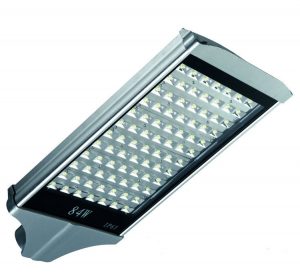 3.Lights on pedestrian crossings Lights on pedestrian crossings are very important for drivers to drive safely, especially in places with narrow roads where the driver cannot see who wants to cross the road. Once you see clearly, the pedestrian has already reached the road, which increases the danger, so the brightness of the lower space outside the crosswalk needs to be increased. Pedestrian trees should be planted when pedestrians pass through more places, and pruning should be done in time. In order to avoid glare, it is not advisable to place the lamps directly in front of the crosswalk. In China, vehicles are required to drive to the right, so the lights should be illuminated from the left. The illumination near the pedestrian crossing should also be strengthened, and the average illumination between 50m before and after the pedestrian crossing should be greater than 30bx.
3.Lights on pedestrian crossings Lights on pedestrian crossings are very important for drivers to drive safely, especially in places with narrow roads where the driver cannot see who wants to cross the road. Once you see clearly, the pedestrian has already reached the road, which increases the danger, so the brightness of the lower space outside the crosswalk needs to be increased. Pedestrian trees should be planted when pedestrians pass through more places, and pruning should be done in time. In order to avoid glare, it is not advisable to place the lamps directly in front of the crosswalk. In China, vehicles are required to drive to the right, so the lights should be illuminated from the left. The illumination near the pedestrian crossing should also be strengthened, and the average illumination between 50m before and after the pedestrian crossing should be greater than 30bx.
4.Lighting layout of the curve When the radius of the curve is less than 1000m, the lighting must be processed according to the curve, and the lights are generally arranged on the side of the curve. In this way, it can be distinguished from the distance by the bright point of the light that the route is a curve, and the closer to the center of the curve, the closer the distance between the lamps. If the radius of the curve is relatively small, the longitudinal distance of the lamp should be reduced to increase the illumination of the road.
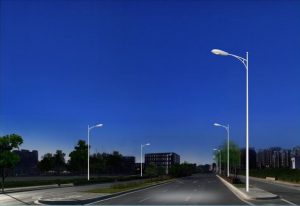 5.Lighting layout of the slope When the vehicle passes through a steep slope to change the slope point, the lighting effect of the vehicle’s headlights becomes poor, so the illumination of the road surface should be increased, that is, the distance between the alkali-less lamps.
5.Lighting layout of the slope When the vehicle passes through a steep slope to change the slope point, the lighting effect of the vehicle’s headlights becomes poor, so the illumination of the road surface should be increased, that is, the distance between the alkali-less lamps.
6.In order to clearly identify the poles and railways, the lights at the level crossing with the railway must be selected to illuminate the light distribution points that illuminate both the poles and the railway crossing at the same time. In front of you to avoid glare. The wooden flat distance 1 from the street light to the movable railing is 3.5–4m. The illuminance outside the pole should be greater than 5kx, and the illuminance at railway crossings should be greater than 10bx..
In short, the layout of street lamps must first take into account the needs of functions, not only having sufficient illumination, but also avoiding glare. In order to ensure safety, it is often necessary to repeatedly compare technical and economic indicators to determine the best solution. The height of the standard light determines the field of view, so choosing a good height determines the lighting field of view of the street light.
Why choose LED lights as street lights
LED street light design concept
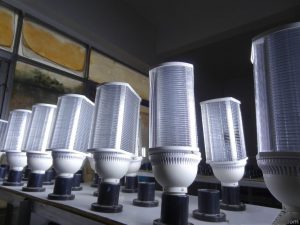 Road lighting is an important part of urban lighting. Traditional street lamps often use high-pressure sodium lamps, causing a huge waste of energy. At present, the global environment is deteriorating, and all countries are developing clean energy. With the rapid growth of the national economy, the contradiction between energy supply and demand in our country has become increasingly prominent, and there has been a serious shortage of electricity supply. Energy conservation is an urgent problem. Therefore, LedsMaster’s development of new high-efficiency, energy-saving, long life, high color rendering index, and environmentally friendly LED street lights is of great significance for energy saving in urban lighting.
Road lighting is an important part of urban lighting. Traditional street lamps often use high-pressure sodium lamps, causing a huge waste of energy. At present, the global environment is deteriorating, and all countries are developing clean energy. With the rapid growth of the national economy, the contradiction between energy supply and demand in our country has become increasingly prominent, and there has been a serious shortage of electricity supply. Energy conservation is an urgent problem. Therefore, LedsMaster’s development of new high-efficiency, energy-saving, long life, high color rendering index, and environmentally friendly LED street lights is of great significance for energy saving in urban lighting.
Road lighting is closely related to people’s production and life. With the acceleration of China’s urbanization process, LED street lights have gradually entered people’s field of vision with the advantages of directional light emission, low power consumption, good driving characteristics, fast response speed, high shock resistance, long service life, and green environmental protection. There is a new generation of energy-saving light sources that have the advantage of replacing traditional light sources. Therefore, LedsMaster’s LED street lights will become a better choice for energy-saving reconstruction of road lighting. Break through the traditional concept and create a new LED street light. LED street lights, also known as LED street lights, LED outdoor lights, LED street lamp heads, street lights, street lights, outdoor lights, street lamp heads, can be used to illuminate street lights projects such as squares, parks, courtyards, highways, rural roads, industrial areas, etc.
LedsMaster’s LED street light chips are imported from Taiwan, and the ultra-high luminous flux has created excellent LED light sources. The technicians use professional optical design to create excellent road lighting effects. The lamp body is a first-grade die-casting aluminum material, which does not fade, resists corrosion, prevents cracking, and is stylish, beautiful and high-end atmosphere. The street lamp has excellent heat dissipation effect. The first-grade die-cast aluminum material dissipates heat, high thermal conductivity, and rapid heat dissipation, which perfectly solves the heat dissipation problem and ensures the service life of the LED. The quality of the power supply directly affects the practical effect and life of the lamp. The power of well-known brands guarantees the quality of the lamp, constant voltage and constant current drive, instant startup, low voltage, safe and reliable.
The mask of the street lamp is high-strength tempered glass, which has extremely high light transmission, is not easy to be damaged, is resistant to friction, and resistant to stamping. The lamps and lanterns use the national standard three-core wire of PVC insulation, high-quality purple-red copper core, shiny, soft to the touch, and have fire-resistant and flame-retardant properties. The more important aspect is that the waterproof and rainproof performance of LED street lights is IP65, and the standard waterproof driver ensures that the driving power does not enter the water. On this basis, the three-layer waterproof rubber ring is used to protect the light body (surface frame, bottom cover, outlet), so that the entire light truly meets the IP65 waterproof / rainproof standard. In order to solve the problem of glare, anti-glare and anti-fog design is adopted. IP65 lightning protection design, designed for engineering. Zhaochang LED street light is simple to install, easy to disassemble, and easy to maintain. Zhaochang factory direct sales of LED street lights with quality assurance.
Application of LED street lights in road lighting
 Road lighting is an important part of urban lighting. Traditional street lamps often use high-pressure sodium lamps to emit 360 degrees. The disadvantage of large light loss has caused a huge waste of energy. At present, the global environment is deteriorating, and all countries are developing clean energy. With the rapid growth of the national economy, the contradiction between energy supply and demand in China has become increasingly prominent, and there has been a serious shortage of power supply. Energy conservation is an urgent problem that needs to be resolved. Zhaochang Lighting, a new type of high-efficiency, energy-saving, long-life, low power consumption, high light efficiency, high color rendering index, and environmentally friendly LED street lights are of great significance for energy saving in urban lighting. With the continuous improvement of LED performance and declining prices, LED street lights have already exceeded the performance indicators of traditional street lights.
Road lighting is an important part of urban lighting. Traditional street lamps often use high-pressure sodium lamps to emit 360 degrees. The disadvantage of large light loss has caused a huge waste of energy. At present, the global environment is deteriorating, and all countries are developing clean energy. With the rapid growth of the national economy, the contradiction between energy supply and demand in China has become increasingly prominent, and there has been a serious shortage of power supply. Energy conservation is an urgent problem that needs to be resolved. Zhaochang Lighting, a new type of high-efficiency, energy-saving, long-life, low power consumption, high light efficiency, high color rendering index, and environmentally friendly LED street lights are of great significance for energy saving in urban lighting. With the continuous improvement of LED performance and declining prices, LED street lights have already exceeded the performance indicators of traditional street lights.
The era of LED street lights comprehensively replacing traditional street lights has arrived. The LED street light has a unique secondary optical design, which illuminates the light of the LED street light to the area to be illuminated, further improving the lighting efficiency to achieve the purpose of energy saving. The light of the LED street light is unidirectional, and there is no light diffusion, which can ensure the lighting efficiency. Traditional street lamps use a reflector to achieve light distribution. A lot of light is concentrated under the lamp post or behind the lamp post, resulting in poor uniformity and waste of light. By using LED street lights and lenses to achieve light distribution, the uniformity of the road surface becomes higher, and waste light is also reduced. LED street lights can achieve better directivity control. Proper design helps eliminate bright and dark spots, increases lighting comfort and saves more energy. The higher the color rendering index of an LED lamp, the better its reducing ability. The color rendering index of LED street lights is much higher than that of traditional street lights. A white light source with a high color rendering index helps to enhance visibility and improve the safety of the environment.
LED street light decay is small, less than 3% of light decay in a year, 10 years of use still meet road lighting requirements. High-quality LED street lights can achieve a lifetime of 50,000 hours. Zhaochang Lighting provides a three-year warranty. Compared with the traditional street lamp’s life of about 15,000 hours, the traditional street lamp needs to be replaced 3 times. Cost, etc., LED street lights can get cost savings brought by high reliability. In tunnel applications, the high reliability of LED street lights is even more important. The shock resistance of LED street lights is good, so the costs caused by maintenance, replacement and road closure can be greatly reduced. The light source efficiency of LED street lights has reached 110-130lm / w, and there is still much room for development. LED street lights have high efficiency, using more than 100LM chips, can save more than 75% of energy compared to traditional street lights. LED street lights do not require buried cables, no rectifiers, etc., and are easy to install. Its excellent heat dissipation performance can better extend the service life of the lamp.
High-quality LED street lights are of reliable quality. All circuit power supplies use high-quality components. Each LED has separate overcurrent protection, so there is no need to worry about damage. In addition, the light color is uniform, no lens is added, and the uniform light color is not sacrificed in order to increase the brightness, thereby ensuring that the light color without aperture is uniform. LED street lights do not contain harmful substances. Compared with traditional street lamps, the maintenance cost of LED street lamps is extremely low. After comparison, the entire investment cost can be recovered in less than 6 years. The energy saving effect of Zhaochang high-power LED street lights is significant, and it can save more than 60% of electricity by replacing traditional street lights. The energy saving effect based on the above principles is significant, and it can save more than 60% of electricity by replacing high-pressure sodium lamps. Low maintenance costs.

